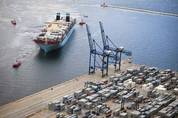
A new and first-time study of the historical development of the efficiency of new ships shows that, in fact, the efficiency of new ships has actually deteriorated since 1990 by 10% on average. This finding is relevant in three ways. First, it once more demonstrates the failure of market forces to reduce ship and shipping emissions and emphasizes the need for regulation.More specifically, it demonstrates the need for tighter 2020 standards for new ships.The International Maritime Organisation (IMO) is currently reviewing whether the efficiency standard for new ships in 2020 in still appropriate
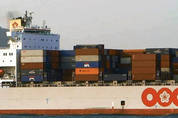
An infographic released by Allianz recently gives an in-depth account of containership growth over the last 50 years.PTI previously published an article on the evolution of the containership, based on the work of Dr Jean-Paul Rodrigue of Hofstra University in the US.According to the infographic, container ship sizes have increased by approximately 1200% since 1968.The MSC Oscar and MSC Oliver were introduced in 2015, each with a capacity of 19,224 TEU.This size is set to be overtaken, with a recent announcement by Hong Kong-based shipping line OOCL that it has placed an order for six 21,000 TE
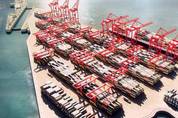
Congestion, cost increases and environmental damage are among the negative impacts of the mega gateway port trend, according to Peel Ports commercial director Patrick Walters.“Port selection needs to be based on proximity to market. Loading or discharging cargo at ports which are remote from the initial origin or ultimate destination of cargo is costly, inefficient, risky and environmentally damaging,” claimed Walters“The model of mega-ports serving as gateways to extensive and increasingly remote hinterlands has to be questioned. Mega-feeders linking mega ports do not alleviate congestion in

Officials at the Panama Canal on Monday were still working their way through a significant vessel backlog after an “unusual” increase in the number of ships awaiting transit began to back up outside the waterway weeks ago.On Monday afternoon there were 19 container vessels awaiting transit on either side of the canal? four more since Friday, according to Keith Bucco, a trade analyst at JOC. Bucco recorded nine at anchor on the Atlantic side and 10 on the Pacific side of the canal.Authorities in Panama issued a congestion advisory to shippers last week, but haven’t responded to a JOC.com reques
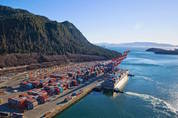
DP World on Thursday announced it is buying Maher Terminal’s Fairview Container Terminal in Prince Rupert, British Colombia, from Germany’s Deutsche Bank, for C$580 million ($457 million), positioning the Dubai terminal operator at one of the fastest growing gateways for Asia-North America trade. The Dubai-based company said it expects to complete the Canadian acquisition, which is subject to regulatory approval, in the second half of the year.“Fairview Container Terminal offers the fastest access for vessels traveling between Asia and North America,” said Mohammed Sharaf, state-owned DP World
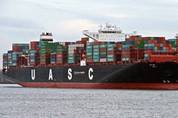
United Arab Shipping Company (UASC) is a global shipping company based in the Middle East. UASC has completed its largest ever newbuilding order of its 17 new vessels. The first of the 18,000 TEU vessel is about to be delivered.Out of the 17 ships order placed with Hyundai Heavy Industries (HII) last November, the first 15,000 TEU MV “Sajir” was already delivered and the rest are still under building.At this month’s naming ceremony of its first 18,000 TEU MV “Barzan”, on the 29th at Mokpo’s Kummho Heavy Industries, the Board of UASC, CEOs, New Ships team, Operations, other HQ executive Board m
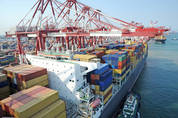
Shipowners that charter out container ships to liner operators are optimistic that the container shipping market is turning around and that charter rates for their vessels will increase as shipping lines turn to them to fill a gap between supply and demand that will start to open up in 2016 and after.A panel of independent shipowners forecast that the combination of continuing global economic growth and declining delivery of new ships next year means that vessel supply and demand will come into balance and create more demand and thus higher charter rates for their assets.“We are going to see a
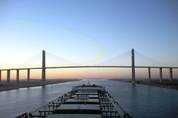
Greek ship owners are still very keen to invest in dry bulk carriers, as 39% of them opt for this type of vessel, while an additional 28% is looking to invest in the tanker market. The three main shipping markets (dry bulk, tankers, containers) are accounting for 80% of the total preferences, while LNG/LPGs account for an additional 20% of the shipowners’ preferences.At the same time, banks are more inclined to finance the acquisition of tankers, a clear reflection of their view of the market’s prospects, as opposed to just 12% of banks which would finance dry bulk carriers. These are some of
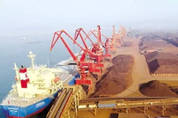
Over the last 15 years China has led maritime forecasters a right old dance. In 2002, rumours that Chinese iron ore imports were about to take off were hard to believe. In those days China’s total imports were below 400mt pa and the ore trade had been sluggish for a decade. But even the most bullish forecasters were way below target and in 2014 seaborne iron ore imports jumped 15% by 119mt to 914mt.This was more than total Chinese seaborne imports which only grew by 65mt in 2014. Coal and metal imports both fell sharply, and the resulting 3% rise was the lowest since the Asia crisis in 1998. S
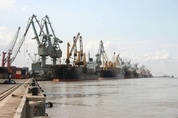
Coal-fired power stations comprise around 60% of India’s power output, and with domestic supply issues and favourable international coal prices, the country looks set to continue to rely on imports. In 2014, India’s thermal coal imports increased 15% to an estimated 162mt. Given that Chinese imports are likely to fall in the coming years, India could emerge as the largest seaborne importer of steam coalTumbling Coal PricesIndian thermal coal imports rose considerably in 2014, partly benefiting from the lowest coal prices in four years. Prices of Indonesian and South African coal, which account